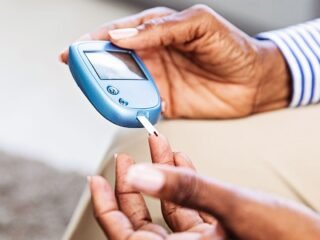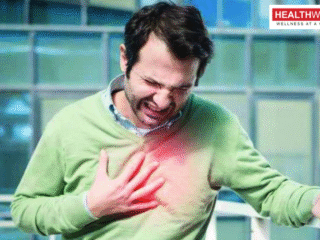New Delhi, 29 October, 2025: Stroke — often called a “brain attack” — remains one of the leading causes of death and long-term disability worldwide. Yet, what’s less widely known is that stroke symptoms can differ significantly between men and women, sometimes making diagnosis and timely treatment more challenging.
Experts warn that early recognition is crucial. Acting within the first 4.5 hours — known as the “golden window” — can drastically improve survival and recovery outcomes. However, due to gender-specific differences in symptoms and biological risk factors, strokes in women are often missed or misinterpreted until it’s too late.
What Is A Stroke?
A stroke occurs when blood flow to part of the brain is blocked or reduced, depriving brain cells of oxygen and nutrients. Within minutes, brain cells begin to die, leading to permanent damage if not treated promptly.
There are two main types of stroke:
- Ischemic Stroke (≈85% of cases): Caused by a blockage in a blood vessel supplying the brain.
- Hemorrhagic Stroke: Caused by bleeding in or around the brain due to a ruptured vessel.
Both types can have devastating consequences if treatment is delayed — including paralysis, speech impairment, or cognitive decline.
Why Stroke Affects Women Differently
While men have a higher incidence of stroke at younger ages, women face a greater lifetime risk due to longer life expectancy and unique hormonal and physiological factors.
Here’s why women are especially vulnerable:
- Hormonal Changes:
Fluctuations in estrogen — especially during menopause — can affect blood vessel health. The protective effect of estrogen diminishes with age, raising stroke risk. - Pregnancy and Birth Control:
Pregnancy increases the risk of blood clots and high blood pressure, while oral contraceptives can heighten stroke risk, particularly in smokers or hypertensive women. - Migraine with Aura:
Women are more prone to migraines with aura, which doubles the risk of ischemic stroke, especially when combined with smoking or hormonal birth control. - Atrial Fibrillation (AF):
AF, an irregular heartbeat, is more likely to cause severe strokes in women than in men. - Longevity and Post-Stroke Disability:
Since women tend to live longer, they experience more strokes later in life — and often face greater disability afterward due to delayed recognition and treatment.
Classic Stroke Symptoms: Common to Both Men and Women
Certain symptoms are universally recognized and form the basis of the BEFAST acronym — a lifesaving tool for identifying stroke quickly:
- B — Balance: Sudden loss of coordination or balance
- E — Eyes: Sudden vision loss or blurriness in one or both eyes
- F — Face: Drooping on one side of the face
- A — Arms: Weakness or numbness in one arm
- S — Speech: Slurred or garbled speech, difficulty understanding words
- T — Time: Act fast — call emergency services immediately
These are the hallmark signs seen in both men and women, and recognizing them promptly is key to accessing life-saving treatment like clot-busting therapy (tPA) or mechanical thrombectomy.
Unique Stroke Symptoms in Women
Beyond the classic signs, women often experience subtle, less typical symptoms that are easily mistaken for other conditions such as fatigue, stress, or anxiety. These include:
- Sudden Fatigue or Weakness:
Women may feel unusually tired or weak before the onset of a stroke, even without noticeable paralysis. - Disorientation or Confusion:
Cognitive changes, including trouble understanding speech or sudden forgetfulness, can appear early. - Nausea and Vomiting:
These are less common in men but can be early signs of a brain hemorrhage in women. - Hiccups or Shortness of Breath:
Unexpected hiccups or difficulty breathing can indicate stroke affecting the brainstem. - Chest Pain or Heart Palpitations:
Some women report chest tightness or irregular heartbeat before a stroke — symptoms often mistaken for cardiac issues. - Loss of Consciousness or Seizures:
Women are more likely to experience fainting spells or seizures as initial symptoms of stroke.
Because these signs are non-specific, they are often misdiagnosed, leading to delays in emergency treatment — a critical factor determining survival and recovery.
Stroke Symptoms More Common in Men
Men, on the other hand, tend to exhibit classic neurological symptoms more clearly, which often leads to faster medical attention. Common early signs in men include:
- Numbness or weakness on one side of the body
- Difficulty speaking or slurred speech
- Vision loss on one side
- Facial drooping
- Sudden headache or dizziness
Men may also experience behavioral changes, such as irritability or impulsive decision-making, due to frontal lobe involvement during a stroke.
The Diagnostic Gap: Why Women Are Diagnosed Later
One of the greatest challenges in stroke care is the gender gap in diagnosis and treatment. Studies show that women are more likely to delay seeking care or to be misdiagnosed with conditions like migraine, anxiety, or low blood pressure.
Additionally, because women often live alone at older ages, there may be no one to notice the early warning signs or call for help.
This diagnostic delay means many women arrive at hospitals after the “golden window” for thrombolytic therapy has closed, limiting treatment options and increasing the risk of long-term disability.
Key Risk Factors for Stroke in Both Men and Women
While biological differences exist, several modifiable risk factors contribute to stroke in both sexes:
- High blood pressure (Hypertension) — the most significant cause of stroke worldwide
- Diabetes — damages blood vessels and increases clot risk
- High cholesterol — leads to plaque buildup and arterial blockages
- Smoking and alcohol use — accelerate vascular damage
- Sedentary lifestyle — contributes to obesity and poor circulation
- Stress and poor sleep — elevate blood pressure and inflammation
Prevention: Steps to Lower Stroke Risk
Preventing stroke requires a holistic approach to managing both physical and lifestyle factors. Experts recommend:
1. Monitor Blood Pressure Regularly
Keep readings below 120/80 mmHg. Hypertension is the top preventable cause of stroke.
2. Maintain Healthy Blood Sugar and Cholesterol
A balanced diet, regular exercise, and medical management help prevent vascular damage.
3. Avoid Smoking and Limit Alcohol
Nicotine and alcohol constrict blood vessels and raise blood pressure.
4. Exercise Regularly
At least 30 minutes of moderate activity five days a week improves circulation and heart health.
5. Eat a Heart-Healthy Diet
Choose foods rich in omega-3 fatty acids, fiber, antioxidants, and low sodium. Include nuts, leafy greens, fish, and whole grains.
6. Manage Stress and Sleep Well
Chronic stress and poor sleep quality can increase stroke risk by raising cortisol levels.
7. Recognize and Act on Warning Signs
Educate family members about BEFAST symptoms to ensure quick emergency response.
Post-Stroke Recovery: Gender-Specific Challenges
After a stroke, recovery patterns differ between men and women. Women often face slower recovery and greater long-term disability, partly due to older age at stroke onset and delayed treatment.
Rehabilitation — including physiotherapy, speech therapy, and emotional counseling — is crucial. Support from family and community networks helps improve mental well-being and functional recovery.
In contrast, men typically regain physical function faster but may struggle with emotional adjustment, including depression or frustration during recovery.
When to Seek Emergency Help
Stroke is a medical emergency — every minute counts. If you or someone around you shows any of the following signs, call emergency services immediately:
- Sudden weakness or numbness (especially on one side)
- Difficulty speaking or understanding speech
- Sudden vision changes
- Dizziness or loss of balance
- Severe headache with no known cause
Prompt medical attention can save lives and prevent irreversible brain damage.
Key Takeaways
- Stroke symptoms can differ between men and women.
- Women often have non-classic, subtle symptoms that are easily overlooked.
- Acting quickly during the first 4.5 hours is crucial for recovery.
- Regular screening for blood pressure, cholesterol, and sugar levels helps reduce risk.
- Awareness and timely action are the best defense against stroke-related disability.
A stroke doesn’t discriminate — but it doesn’t affect everyone the same way either.
Women face unique risks due to hormonal factors, pregnancy, and longer life spans, while men are more prone to traditional symptoms that prompt quicker action.
The key message this World Stroke Day is clear: Know the warning signs, act fast, and never ignore subtle changes. Early recognition saves brain cells — and lives.






